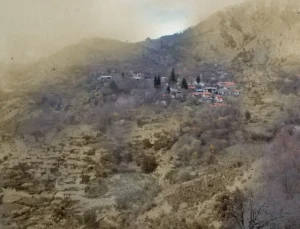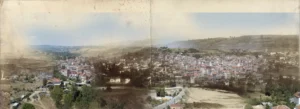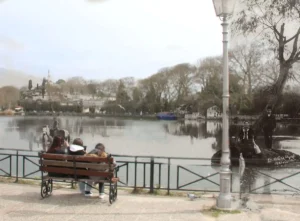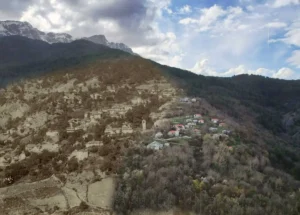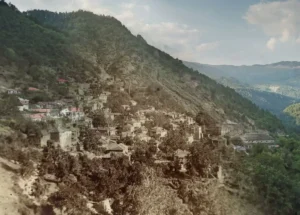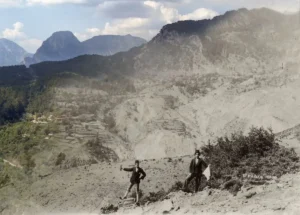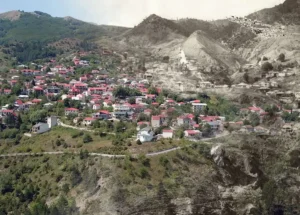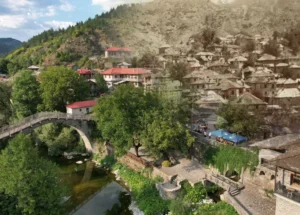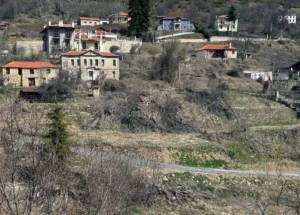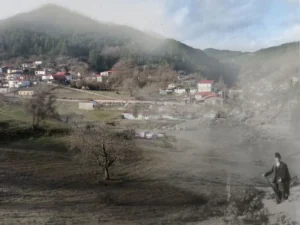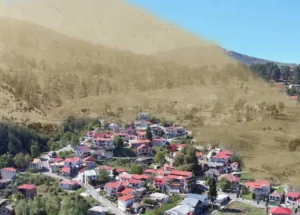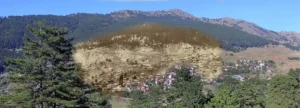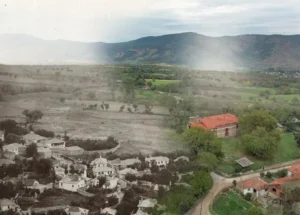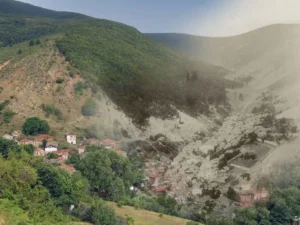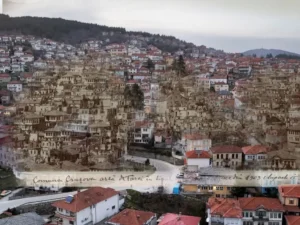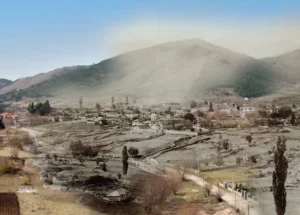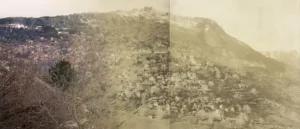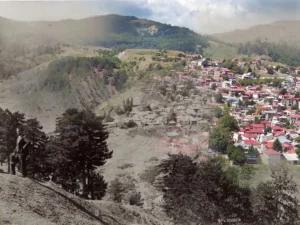

Unlike Avdela and many other villages photographed by the Manakia brothers, Syrrako, a stone settlement, appears to be frozen in time. The houses and churches remain almost unchanged from one century to the next. The neighboring village, Kallarites – Călarli in Vlach – shares this timeless quality, though its architecture is less visible in the picture. At an altitude of over 1200 meters, Kallarites perches on a barren plateau above a deep ravine with 500-meter vertical walls. An optical illusion makes Syrrako seem just a short walk away, but the ravine turns the journey into a trek of several hours. By car, it’s a 20-kilometer detour with stunning views of cliff-edge villages. A spot near the Church of Saint George, built by the people of Călarli, is where the Manakia brothers captured Călarli in a photograph.
These villages once had thriving economies, known for shepherding and silverwork – the Bulgari family hails from Kallarites. Legend has it that the fabric for Napoleon’s army capes was woven in Syrrako. The Vlachs, facing harsh mountain climates, invented the first waterproof fabric, a mixture of sheep’s wool and goat hair. Wace and Thompson noted that in the 19th century, each village had over 6,000 inhabitants. When I first visited Syrrako in February 2014, it was deserted, its stone architecture standing proud. In Kallarites, only 7 inhabitants remained, though in the summers, especially for the Feast of the Assumption, a few hundred residents return. A century of history has transformed these communities, making the unchanged photos seem like windows into very different worlds.



